The 2020 Lyrid meteor shower thrills skywatchers. Here are the best photos.
Behold, bits of Comet Thatcher!
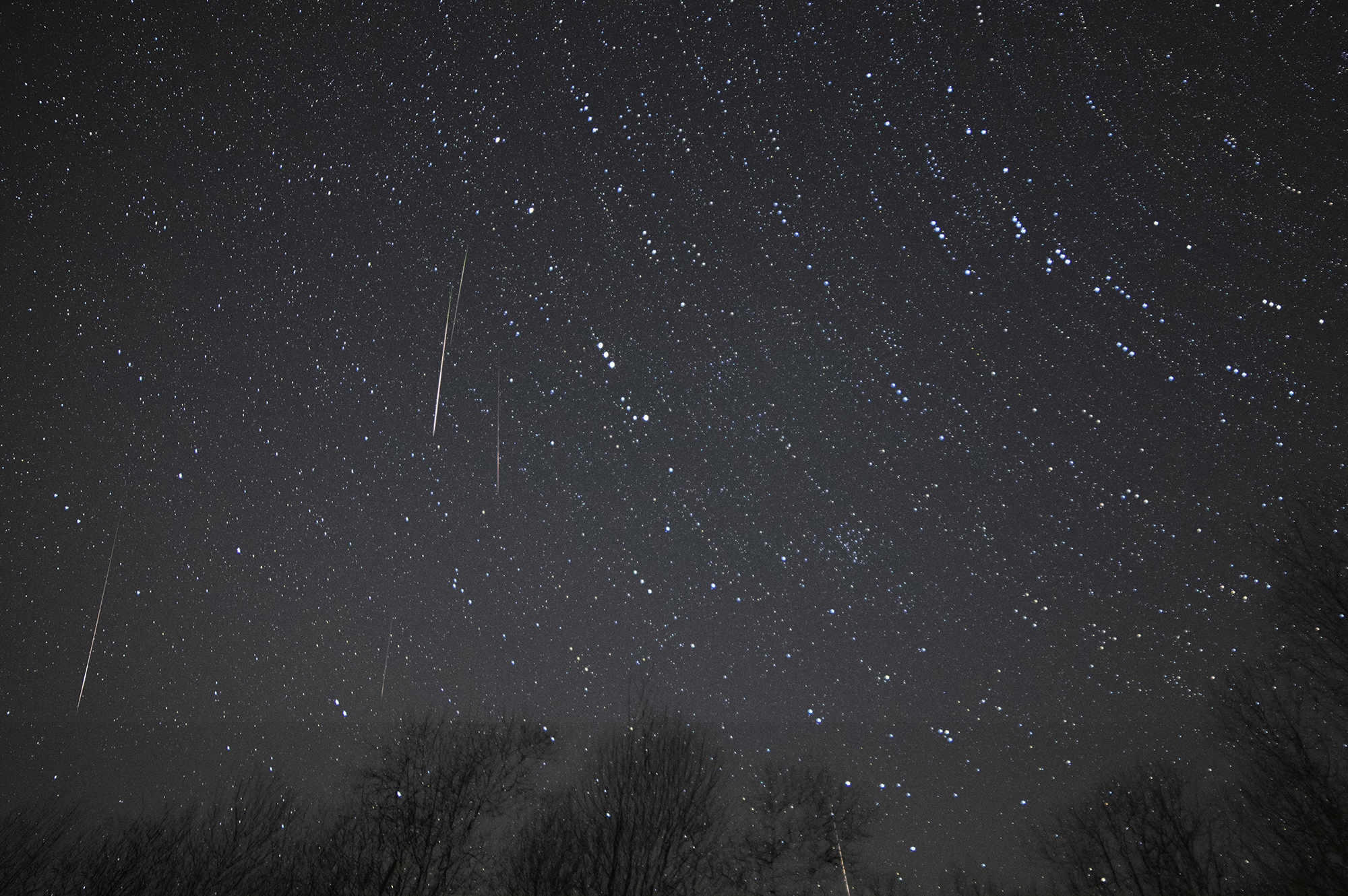
The annual Lyrid meteor shower put on an exceptional show for skywatchers this year, with the new moon setting the stage for gorgeous "shooting stars" to prance across the dark night sky.
During the Lyrid meteor shower, which peaked overnight on April 21-22, viewers in the Northern Hemisphere were treated to as many as 20 visible meteors per hour in places with clear, dark skies devoid of light pollution, which can drown out some fainter meteors. And, without any bright moonlight to outshine these so-called "shooting stars," viewing conditions for this year's Lyrids were the best in years.
Astrophotographers across the U.S. captured some incredible views of bright Lyrid meteors lighting up the night sky. Here are some of the most amazing views captured by Space.com readers.
Related: The best Lyrid meteor shower photos of all time
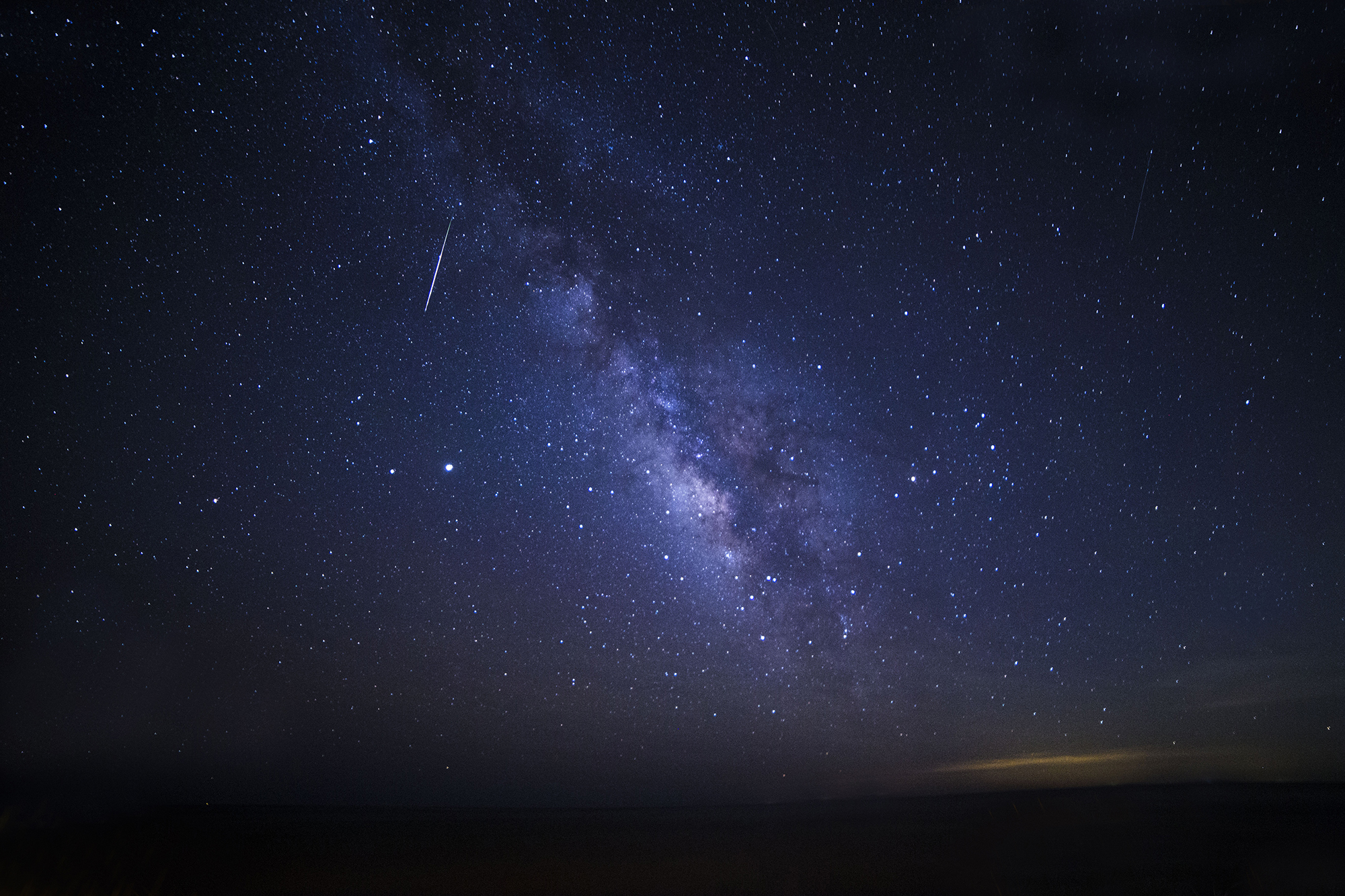
While photographing the Lyrid meteor shower from Fripp Island, South Carolina, early Wednesday morning (April 22), astrophotographer Tina Pappas Lee captured this view of a meteor that appears to be heading toward the planets Jupiter and Saturn as it passes through the constellation of Aquila, the eagle.
The brightest object in the frame is Jupiter, and Saturn can be seen directly to its left. Also visible a bit farther to the left is the planet Mars. This planetary trio made a rare close approach last week and are now slowly moving farther apart each night.
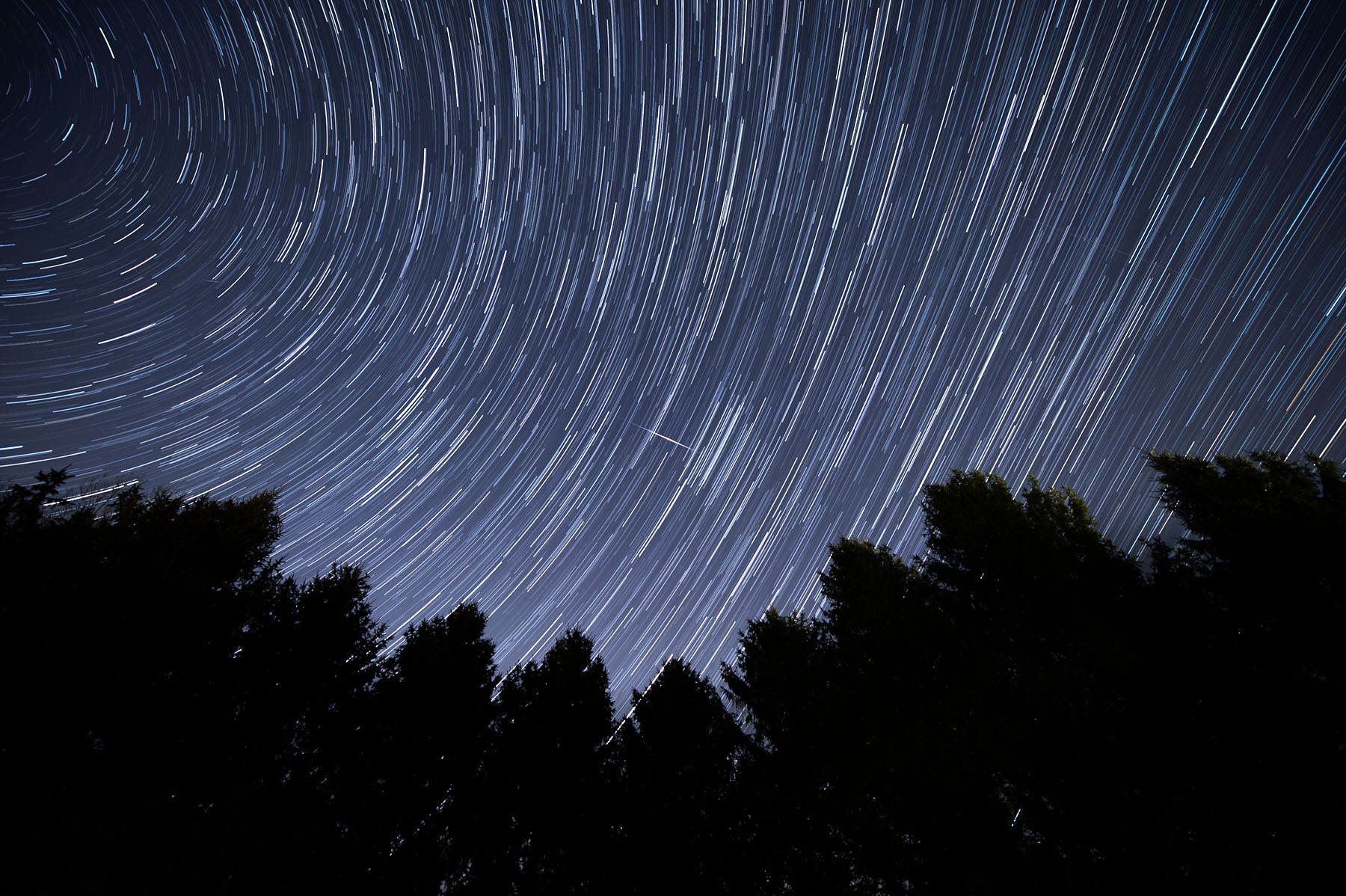
Although the Lyrids peaked this week, the meteor shower has been active since mid-April, and a few Lyrid meteors will continue to grace the skies until the end of the month. Astrophotographer Jeff Berkes captured this photo of an early Lyrid meteor with star trails on April 12 from his backyard in Maryland.
Get the Space.com Newsletter
Breaking space news, the latest updates on rocket launches, skywatching events and more!
"I have been outside every clear night, and it is amazing how much clearer the night sky is recently, and how I don't see a single plane in the sky during a 2 hour star trail," Berkes told Space.com in an email. "These are great times to get out, urban or suburban and enjoy the clear skies we are having."
Related: Here's what to see in the night sky while you're stuck at home
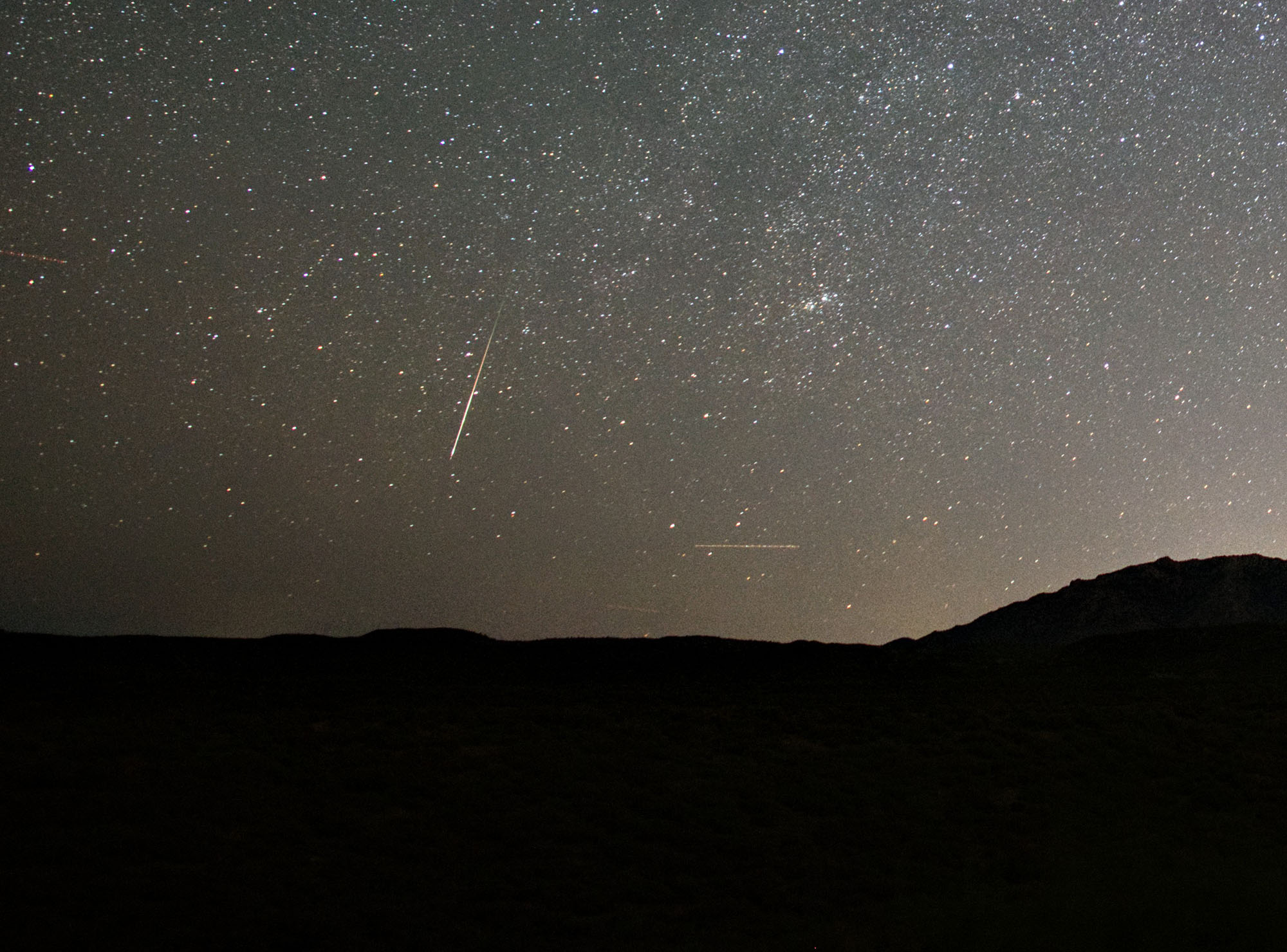
First-time meteor photographer Jason Robbins, who has spent years pointing cameras at birds by day, decided to try something new and photograph the night sky in hopes of capturing a "shooting star" during the peak of this year's Lyrid meteor shower.
Robbins captured this sparkling view of a Lyrid meteor on Wednesday (April 22) at approximately 4:30 a.m. local time, from about 15 miles (24 kilometers) west of Prescott, Arizona. If you look closely, you'll see the meteor's pink-and-green tail.
The color of a meteor's trail depends on its chemical composition. Lyrid meteors, which are "crumbs" of material from Comet Thatcher, often appear pink and green, whereas other showers like the December Geminids produce turquoise-colored trails.
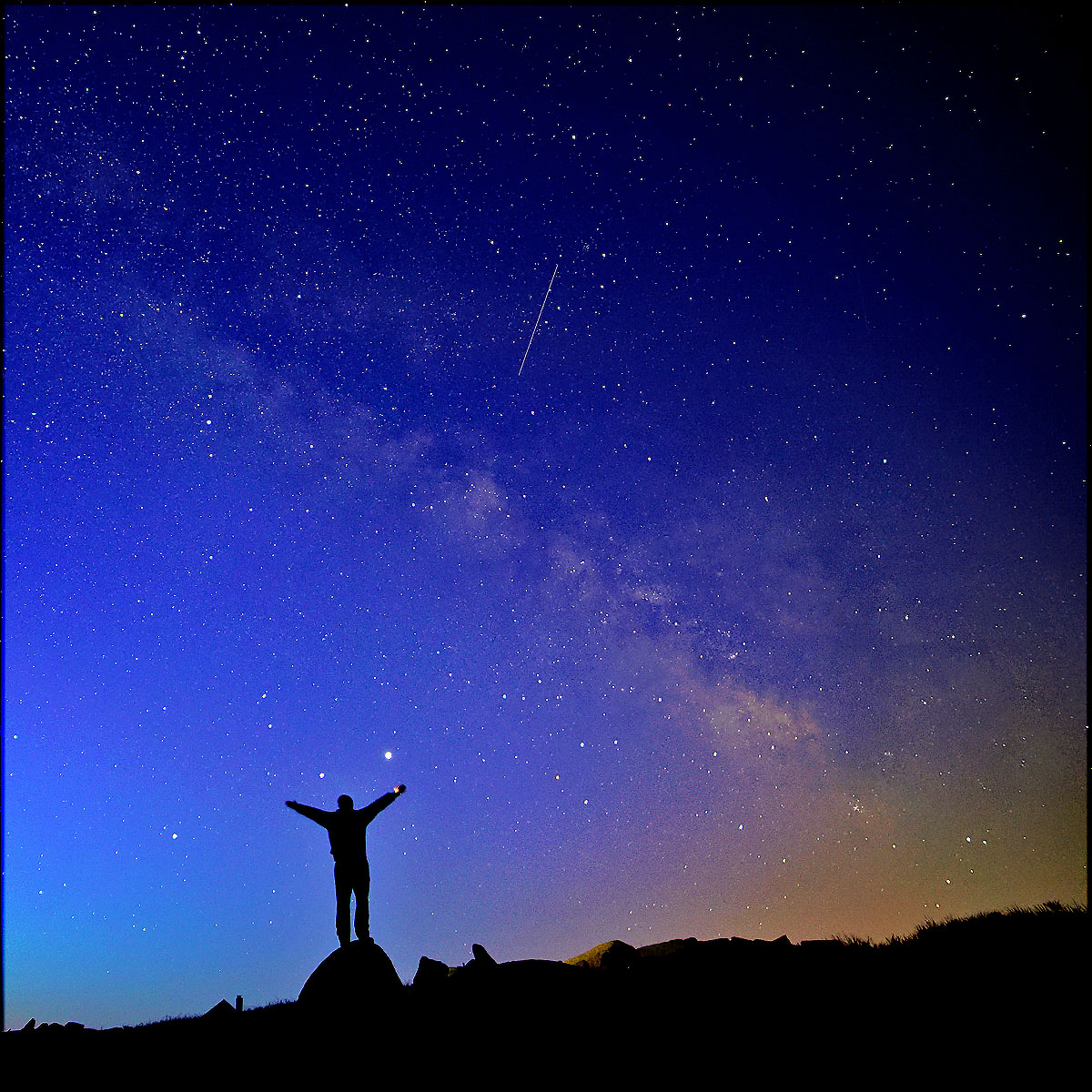
A few days before the peak, astrophotographer Andrew March of Rockport, Massachusetts captured several Lyrid meteors in the early morning sky. March took this "selfie" with a meteor crossing the Milky Way. Jupiter and Saturn are visible directly above his head, and Mars is shining off to the left.
After photographing the Lyrids on Sunday (April 19), March went out for another photoshoot during the peak on Wednesday morning (April 22). You can see several of his photos in the slideshow below.
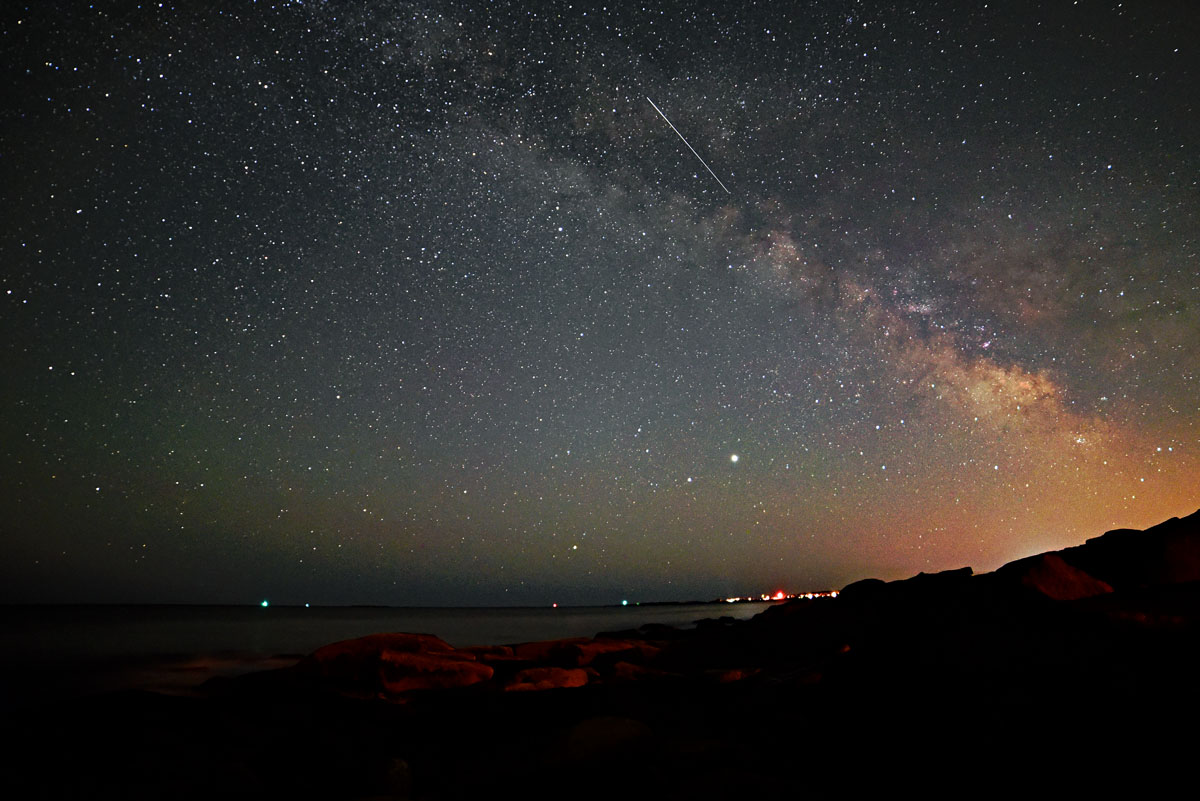
A meteor crosses in front of the Milky Way in this photo captured by Andrew March in Rockport, Massachusetts, on April 19, 2020.
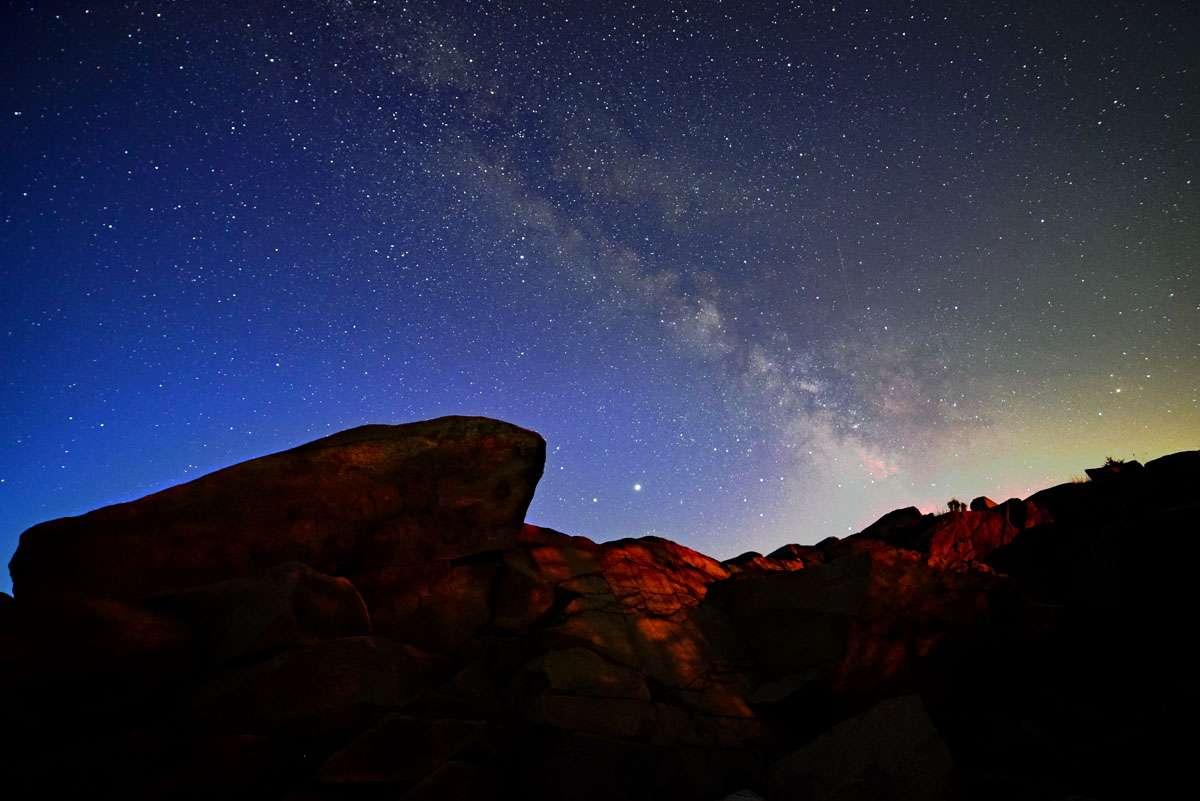
A faint Lyrid meteor is barely visible to the right of the Milky Way galaxy shortly before dawn on April 22, 2020, in this photo captured by Andrew March in Rockport, Massachusetts.
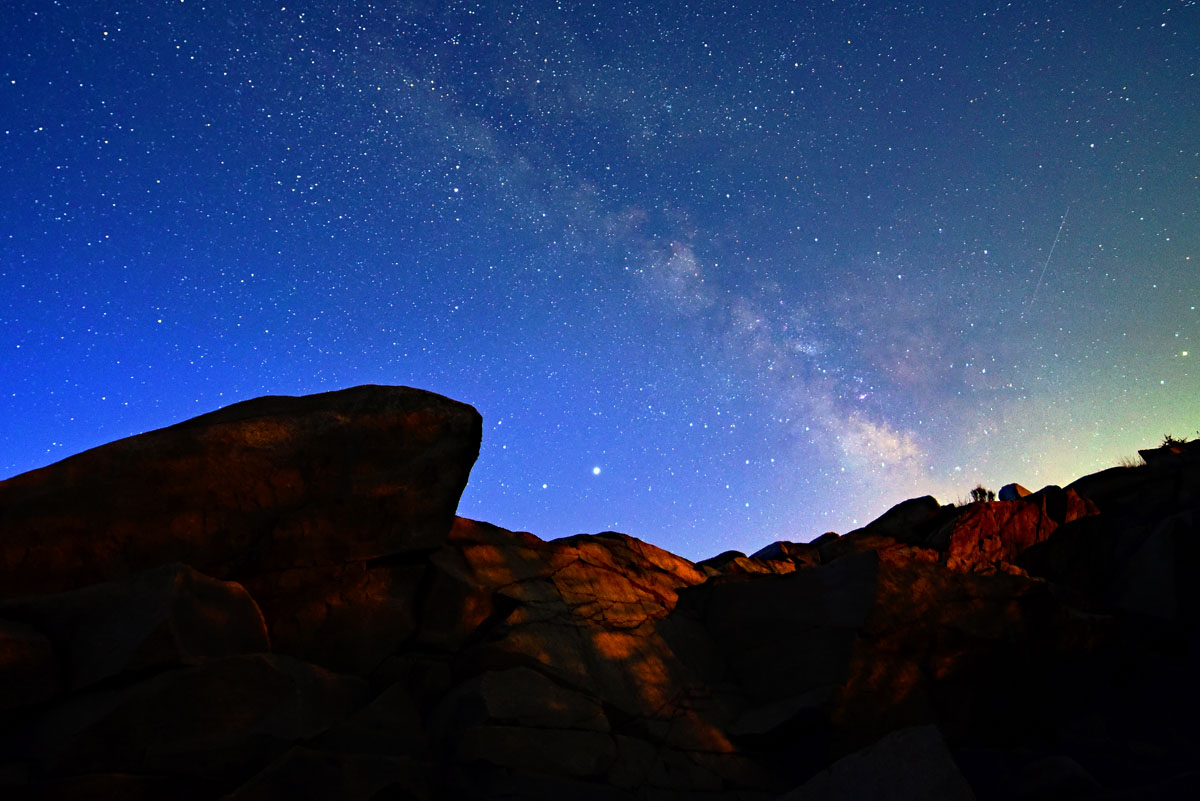
A faint Lyrid meteor is barely visible to the right of the Milky Way galaxy shortly before dawn on April 22, 2020, in this photo captured by Andrew March in Rockport, Massachusetts.
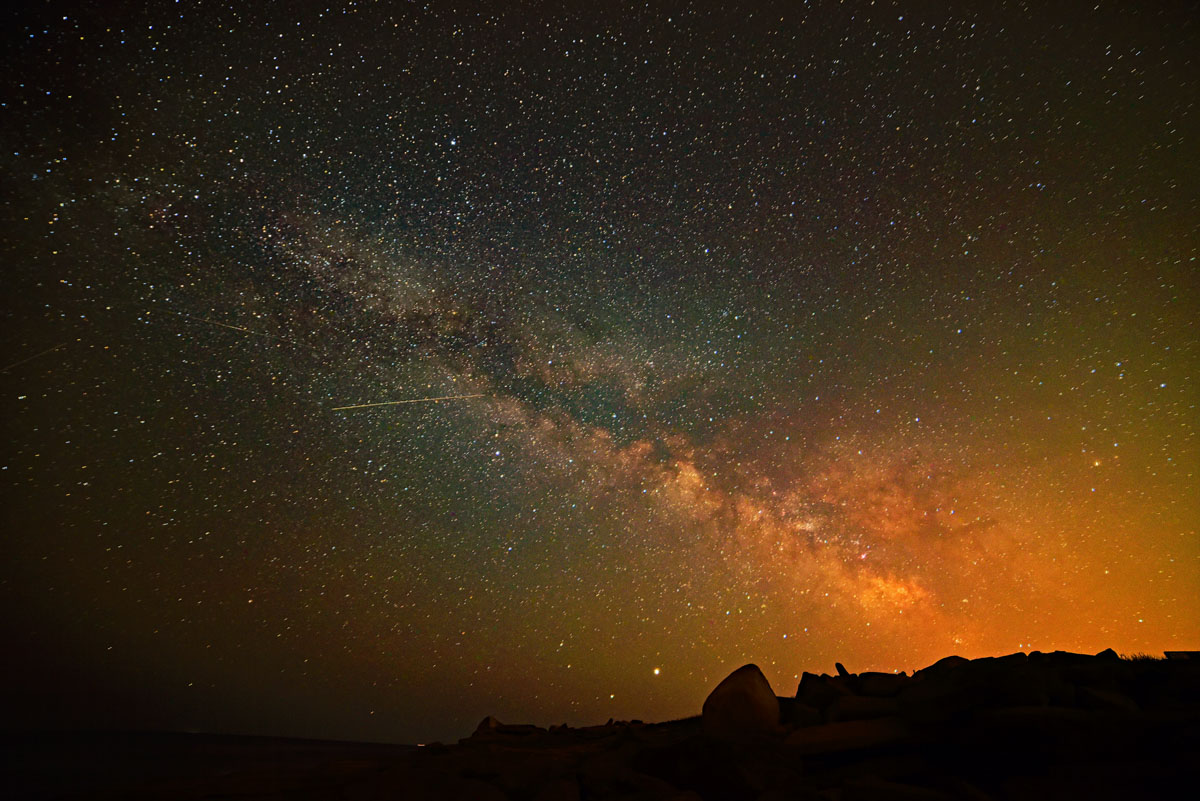
Photographer Andrew March captured this image of the Lyrid meteor shower over Rockport, Massachusetts, on April 19, 2020.
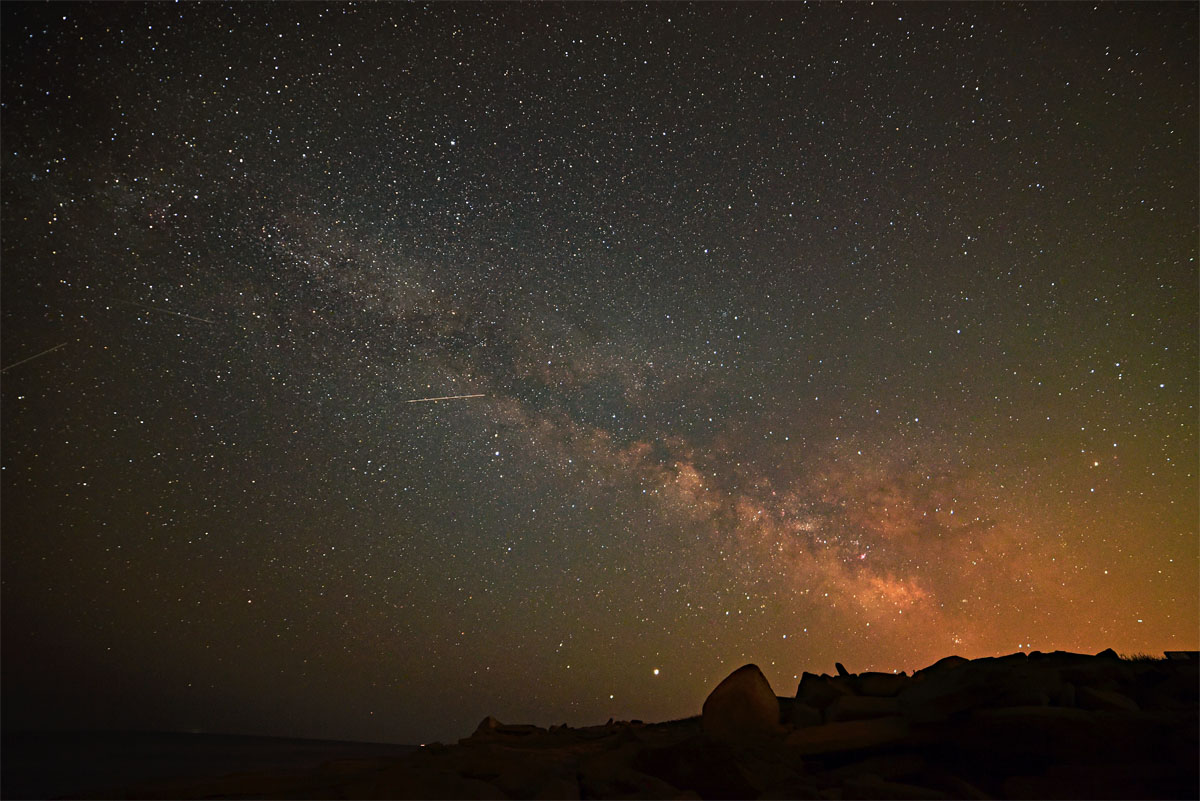
Photographer Andrew March captured this image of the Lyrid meteor shower over Rockport, Massachusetts, on April 19, 2020.
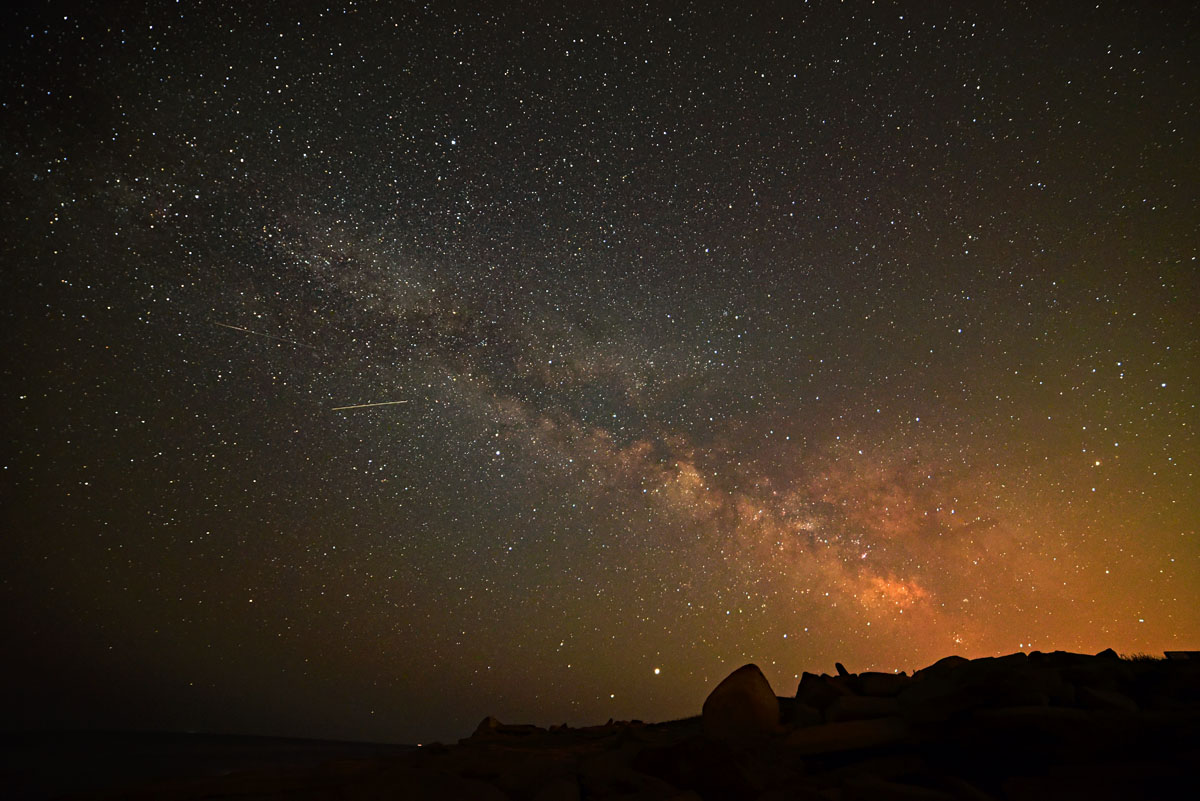
Photographer Andrew March captured this image of the Lyrid meteor shower over Rockport, Massachusetts, on April 19, 2020.
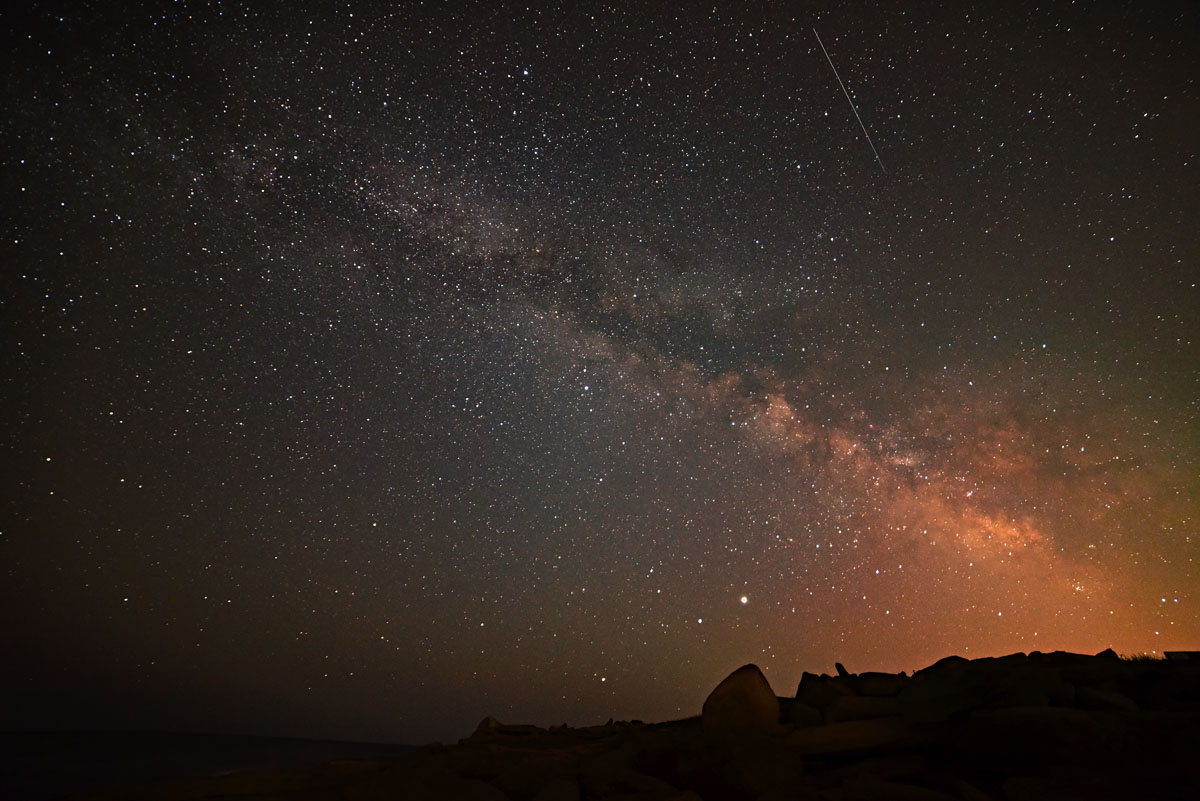
Photographer Andrew March captured this image of the Lyrid meteor shower over Rockport, Massachusetts, on April 19, 2020.
Editor's note: If you snap a great photo Lyrid meteor shower that you'd like to share for a possible story or image gallery, send photos, comments and your name and observing location to spacephotos@space.com.
- How to see the best meteor showers of 2020
- How meteor showers work (infographic)
- Meteor shower quiz: How well do you know 'shooting stars'?
Email Hanneke Weitering at hweitering@space.com or follow her @hannekescience. Follow us on Twitter @Spacedotcom and on Facebook.
OFFER: Save 45% on 'All About Space' 'How it Works' and 'All About History'!
For a limited time, you can take out a digital subscription to any of our best-selling science magazines for just $2.38 per month, or 45% off the standard price for the first three months.
Join our Space Forums to keep talking space on the latest missions, night sky and more! And if you have a news tip, correction or comment, let us know at: community@space.com.

Hanneke Weitering is a multimedia journalist in the Pacific Northwest reporting on the future of aviation at FutureFlight.aero and Aviation International News and was previously the Editor for Spaceflight and Astronomy news here at Space.com. As an editor with over 10 years of experience in science journalism she has previously written for Scholastic Classroom Magazines, MedPage Today and The Joint Institute for Computational Sciences at Oak Ridge National Laboratory. After studying physics at the University of Tennessee in her hometown of Knoxville, she earned her graduate degree in Science, Health and Environmental Reporting (SHERP) from New York University. Hanneke joined the Space.com team in 2016 as a staff writer and producer, covering topics including spaceflight and astronomy. She currently lives in Seattle, home of the Space Needle, with her cat and two snakes. In her spare time, Hanneke enjoys exploring the Rocky Mountains, basking in nature and looking for dark skies to gaze at the cosmos.










